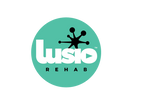Everything You Should Know About Strokes

With stroke cases increasing amongst younger populations globally, and the life altering disability they can cause should you be lucky enough to survive, it is essential to understand their causes and how you can prevent them. Knowing your stroke recovery options is vital to getting quality treatment and medical care to improve your condition and quality of life post stroke.
Strokes can be deadly and leave a lot of damage to the human body. But what are they really? And what are the stages of stroke recovery? Read on to learn more.
What Are Strokes?
Stroke attacks the brain - the human control centre - changing lives in an instant. Your brain is fed by blood carrying oxygen and nutrients through blood vessels called arteries. A stroke happens when blood cannot get to your brain, because of a blocked or burst blood vessel or artery. As a result, your brain cells die due to a lack of oxygen and nutrients, causing numbness and / or paralysis in parts of the body.
So, what causes strokes? And, what are the stages of stroke recovery? The more informed you are about a condition, the more prepared you are to help someone suffering from it, or prevent it from happening to you.
What Causes Strokes?
Strokes can be caused by a number of medical conditions and / or lifestyle choices:
- High blood pressure is the most prevalent cause and must be kept in check with frequent check-ups and medication.
- Heart disease can lead to strokes.
- Cigarette smoking is harmful and can be heavily responsible for stroke.
- Diabetes and other forms of obesity are other major causes.
A healthy lifestyle with a proper diet and exercise regimen is crucial to avoiding strokes. However, it is entirely possible that a stroke occurs when you least expect it.
So, what are the stages of stroke recovery? The healing process is lengthy and complicated and is mainly about rehabilitation. Persistence and adherence to your rehabilitation program is as always the key to a successful recovery, and the process could look something like this.
What Is The Stroke Recovery Process?
After a stroke, acute medical care is likely to be provided for the first week or two, or as deemed appropriate by healthcare professionals - most likely often whilst the survivor is in hospital for a period. Medication and rest will be the main prescribed during this time. Once discharged from hospital, the process will move into the rehabilitation stage.
It is during the rehabilitation phase where the most amount of recovery will be noticed. Securing good rehabilitation services is important to your recovery, especially in the early stages. The rehab period can last from a few months to a couple of years, depending on multiple factors, but principally of course the severity of the post-stroke injuries / disability.
What are some of the Rehabilitation Techniques Used in Stroke Recovery?
Rehabilitation is the most crucial stroke recovery step and if pursued diligently it will see the best possible health outcomes.
Rehabilitation programs focus on restoring someone to health or normal life through training and therapy after stroke and more often than not are supervised by a health professional. The sooner the better as regards when starting a rehab program, and in some instances that could be just 24 hours after a stroke.
Often the injury or disability resulting from a stroke will involve some form of paralysis in the body and stroke recovery relies heavily on stimulation of the affected region to help bring back movement. ‘Forced Use’ is one technique that can be used to try and gain back movement in paralysed limbs post stroke.
Mobility training is crucial to people who want to gain back some independence in their life, especially if the stroke has left them severely paralysed. Proper usage of wheelchairs, walkers and canes forms a crucial part of the post stroke recovery. Furthermore, ankle braces are commonly used with feet paralysis to manage the body’s weight and help the stroke survivor walk.
Motor skills therapy is another prevalent method used with stroke rehab to help in the movement of specific muscles which have been affected. This will likely be led by Physiotherapists, Occupational Therapists and or Exercise Physiologists. Often times the therapy will involve fine motor movement goals such as re-training the finger muscles, or even facial muscles or the tongue.
Cognitive therapy, along with technologies like AI, virtual reality and electrical stimulation of muscles, are also used to treat strokes.
Lusio Rehab: Helping Improve Health Outcomes Through Technology
Strokes are essentially treated with medication and rehabilitation. Physical and mental therapy helps with recovery and easing the side effects of strokes. Whilst a healthy diet and exercise will help minimise the chances of having a stroke, if you do suffer from one then rehabilitation is the key to stroke recovery..
At Lusio Rehab, we offer LusioMATE to help motivate stroke survivors with their rehabilitation program and movement goals. It’s low cost and low risk with the NDIS and can be funded via Assistive Technology from either a Core funding budget or from the following sub-categories of your NDIS funding: Consumables, Capacity Building, Personal Mobility, Assistive Equipment Recreation.
The LusioMATE app provides an ecosystem of a wearable device, therapy gaming platform and a clinician dashboard for monitoring and prescribing remotely. It is made for players of almost any level of mobility and for any part of the body. It connects to all smart phones and tablets (Android and iOS), smart TVs and TV boxes, and enables players to play games designed to stimulate, engage and create motivation for movement.
Contact us here for more details.
